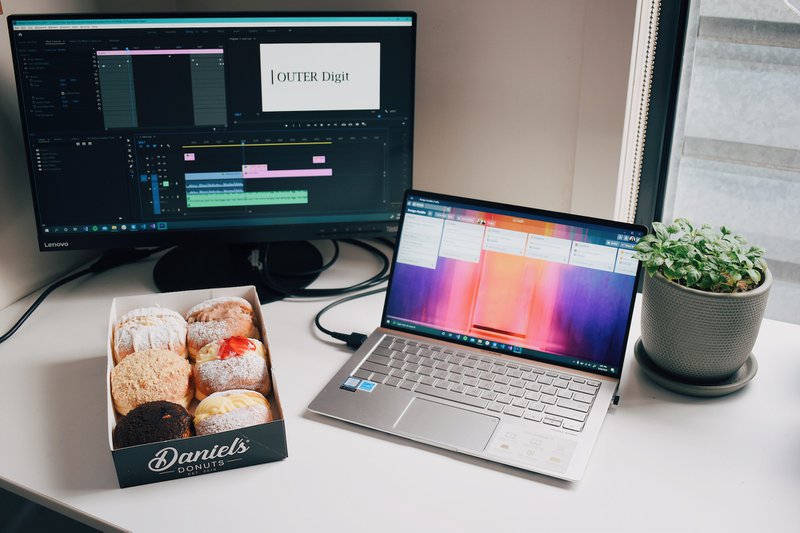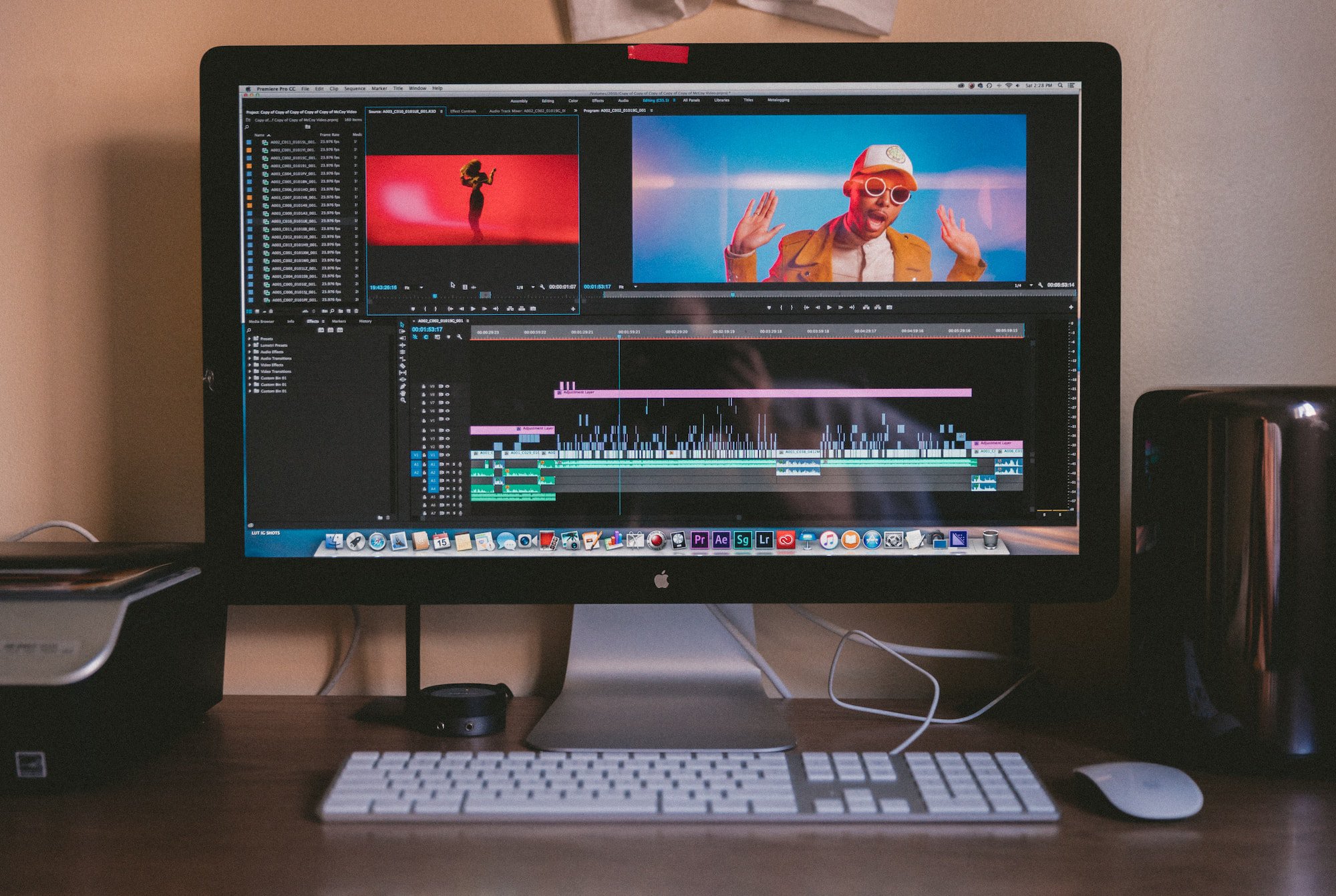In today's ever-evolving digital landscape, video content has taken center stage in revolutionizing how real estate agents promote property listings. More than just a trend, videos are a powerful marketing tool that breathes life into static property images, allowing potential buyers to experience properties in a dynamic and immersive way. They provide a visual narrative that not only showcases the property but also evokes emotion and paints a picture of what life could be like living there.
Video content is an efficient and effective way of providing valuable information to clients, showcasing the unique features of a property, and standing out in the crowded real estate marketplace. A well-crafted video can increase your online presence, boost viewer engagement, and lead to higher conversion rates. So, why not press play on video content? It might just be the game-changer your real estate marketing strategy needs.
Why Should Real Estate Agents Use Video Marketing?
Increasing Online Presence
In today's digital world, having a strong online presence is crucial for success in the real estate industry. Video content significantly enhances your online visibility. It boosts your search engine rankings, keeps visitors on your site longer, and improves your social media engagement. Moreover, videos are more likely to be shared than text content, making them a great tool to reach a wider audience and gain more exposure for your listings.
Boosting Viewer Engagement
Videos offer a dynamic and immersive experience that is hard to replicate with just text and images. They allow viewers to visualize the property as if they were walking through it themselves, leading to increased engagement. The more engaging your content, the more likely viewers are to share it, comment on it, or reach out for more information. All of these interactions can lead to more leads and ultimately, more sales.
Showcasing Properties Effectively
Videos provide an unparalleled platform to showcase properties. With video content, you can take potential buyers on a virtual tour of the property, highlighting key features and selling points that may not be obvious from photos alone. You can also use videos to share testimonials from satisfied customers, provide neighborhood guides, or offer home buying/selling tips, all of which add value for your viewers and help showcase your properties more effectively.

Types of Videos for Real Estate Marketing
Property Tours
One of the most effective types of video content for real estate marketing is property tours. These videos offer potential buyers a virtual walkthrough of the property, allowing them to explore its layout, features, and feel at their own pace. You can highlight key selling points, like a remodeled kitchen or a stunning view, giving viewers a comprehensive overview that photos alone can't provide.
Neighborhood Guides
Neighborhood guide videos give potential buyers insight into the local community. These videos can highlight local amenities, such as parks, schools, restaurants, and other attractions. By showcasing the lifestyle and perks of living in the area, these guides can help potential buyers envision themselves as part of the community.
Testimonials from Satisfied Clients
Testimonials are a powerful tool for building trust and credibility. Video testimonials from satisfied clients sharing their positive experiences can be more personable and impactful than written reviews. These videos can demonstrate your professionalism, expertise, and commitment to customer satisfaction.
Home Buying/Selling Tips
Educational videos offering home buying or selling tips can establish you as a helpful and knowledgeable industry expert. These videos could include advice on preparing a home for sale, understanding real estate contracts, or tips for first-time homebuyers. By providing valuable information, you can attract and engage viewers who are in the early stages of the buying or selling process.
How to Create Engaging Real Estate Videos
Choosing the Right Equipment
Investing in the right equipment is paramount to creating high-quality videos. While a professional-grade camera can give you the best results, don't fret if budget is a concern. A smartphone with a good camera and a stabilizer for smooth, steady shots, can work wonders too. Good lighting is crucial – natural light is always best, but additional lighting equipment might be necessary for darker rooms. Consider also investing in a drone for captivating aerial views of the property and the neighborhood.
Preparing the Property for the Shoot
Presentation is key in drawing potential buyers' attention. Ensure the property is clean, decluttered, and well-staged before filming. Highlight areas of the house that scream personality and charm. Remember, you want viewers to imagine themselves living in the space. Stage each room to appear lived-in but not personal, removing family photos and overly bold decor that might not appeal to everyone.
Crafting a Compelling Narrative
Storytelling is a powerful tool in video marketing. Rather than just providing a room-by-room tour, create a narrative that guides viewers through the property. Make it an experience, emphasizing unique features and details that make the property special. Remember, you're not only selling a property, you're selling a lifestyle.
Tips for Filming
When filming, use a variety of shots to keep the video visually interesting. Wide shots are perfect for showcasing large areas, while close-ups can highlight unique features or finishes. Smooth, slow pans work well for showing rooms' layout. Keep shots steady and movements slow to prevent disorientation. Remember, the goal is to make the viewers feel as if they are walking through the property themselves.

Editing Your Real Estate Videos
After capturing all the necessary footage, it's time to piece them together into a captivating video. This involves a few key steps:
Basic Editing Techniques
Start by organizing and trimming your clips to showcase the property in the best possible light. Sequence your shots logically and engagingly, typically starting from the exterior of the property and gradually moving inwards. Remember to keep transitions smooth and natural to maintain viewer engagement. Also, cut any unnecessary or repetitive footage to keep the video concise and focused.
Adding Music and Voiceovers
Adding background music can enhance the mood and pacing of your video. Opt for a track that complements the property and the neighborhood. Keep the volume low enough so it doesn't distract viewers from the visuals or any voiceover you might have. Speaking of voiceovers, these can provide useful information and commentary that isn't immediately obvious from the footage. When recording your voiceover, ensure the tone matches the overall feel of the video and the property you're showcasing.
Including Branding
Never miss an opportunity to build brand recognition. Include your logo, contact information, and any unique branding elements in your video. These can appear in the intro, outro, or as a watermark throughout the video. However, ensure your branding doesn't distract from the property itself — remember, the focus should always be on showcasing the real estate listing.
Sharing and Promoting Your Real Estate Videos
Once your video is ready, it's time to get it in front of potential buyers. Here's how to share and promote your videos effectively:
Optimize Your Videos for SEO
When uploading your videos to platforms like YouTube or Vimeo, pay attention to SEO. Use relevant keywords in your video title, description, and tags to make it easier for people to find your content when they search for real estate listings. Also, include the property's location in the title and description for better local SEO.
Share on Social Media Platforms
Social media platforms are great places to distribute your videos. Post your videos on platforms where your target audience is most likely to hang out, such as Facebook, Instagram, LinkedIn, and Twitter. Use catchy captions and relevant hashtags to increase visibility. On Instagram, consider using IGTV for longer videos. Don't forget to engage with viewers who comment on your videos to build relationships and encourage shares.
Embed Videos in Email Newsletters
Email newsletters are another excellent way to share your videos. If you have a mailing list of potential clients, send them an email featuring your new video. Most email marketing platforms allow you to embed videos directly in your emails. However, if yours doesn't, you can always include a thumbnail image of the video and link it to your video on YouTube or your website. This not only keeps your subscribers informed about new properties but also drives traffic to your online platforms.
Measuring the Success of Your Video Marketing Efforts
The success of your real estate video marketing efforts should be measurable. By tracking key performance indicators (KPIs), you can identify what's working and what needs improvement.
Key Performance Indicators (KPIs)
Several KPIs can help you gauge the effectiveness of your video marketing. These include:
- Video views: This is a basic measure of how many people have seen your video. However, it doesn't provide information about how engaged the viewers were.
- Watch time: This indicates how long viewers watched your video. If viewers are dropping off quickly, you may need to make your videos more engaging.
- Engagement: This includes likes, comments, shares, and subscribers — signals that viewers are interacting with your content.
- Click-through rate (CTR): If you have a call-to-action (CTA) in your video — like a link to a property listing — the CTR will show you how many viewers followed it.
- Conversions: This tracks how many viewers took the desired action after watching your video, such as contacting you about a property or signing up to your mailing list.
Tools for Tracking Video Engagement
There are several tools available that can help you track these KPIs. YouTube's built-in Analytics tool provides data on views, watch time, likes, comments, and shares. For more advanced tracking, consider investing in a video hosting platform with premium analytic features, such as Vimeo or Wistia. These platforms can provide detailed insights into viewer behavior, including heat maps showing which parts of the video were watched, skipped, or rewatched.
Adjusting Strategy Based on Performance
After gathering and analyzing your data, use these insights to refine your video marketing strategy. If certain types of videos are performing better than others, consider making more of those. If viewers are dropping off at a certain point, consider revising your video structure or editing style. Remember, optimizing your video marketing strategy is a continuous process of testing, measuring, and adjusting.

Conclusion
In summary, video marketing is a powerful tool for promoting your real estate listings. With some basic editing techniques, you can create engaging and informative videos that showcase your properties in their best light. Including elements like music, voiceovers, and branding can further enhance your videos and increase brand recognition. Promoting your videos effectively through SEO, social media, and email newsletters can help you reach a wider audience. Moreover, measuring your video engagement using various KPIs can help you continually refine your strategy for better results.
Now that you're equipped with all these tips and strategies, it's time to jump in and start using video marketing for your real estate business. Remember, it's not just about creating videos; it's about creating quality content that resonates with your audience and drives engagement. Good luck, and we can't wait to see what you create!






